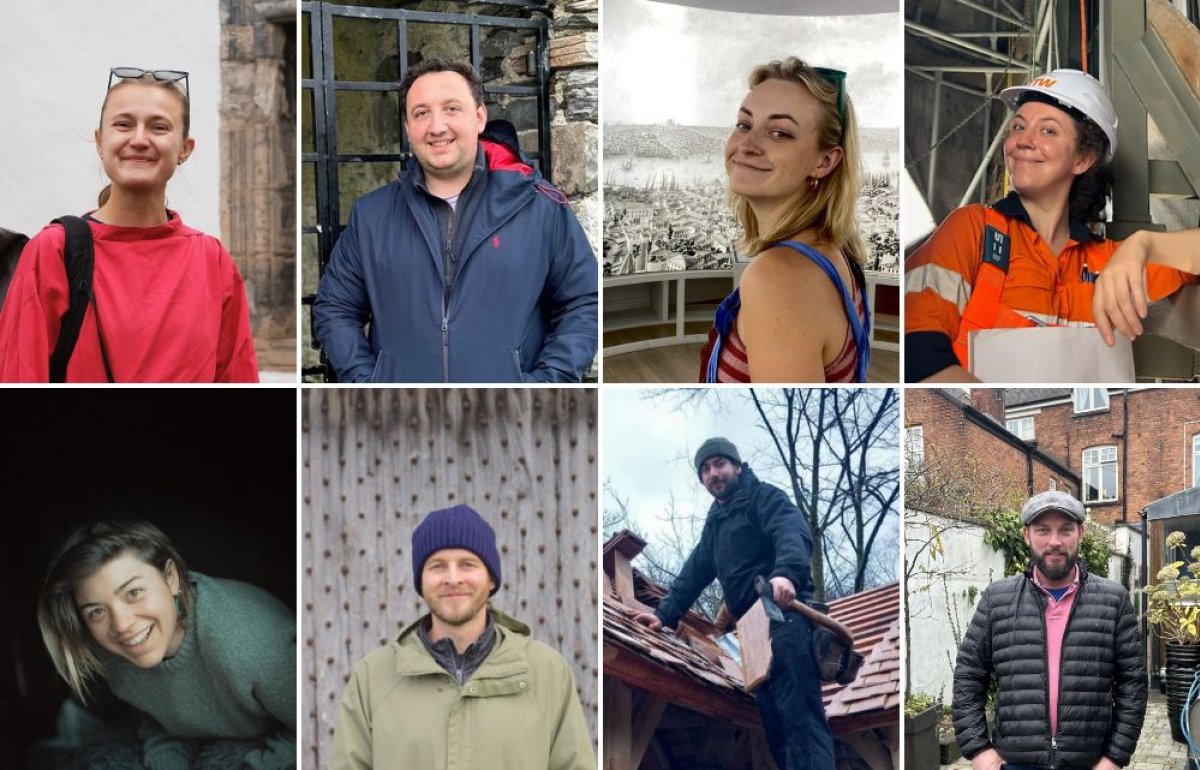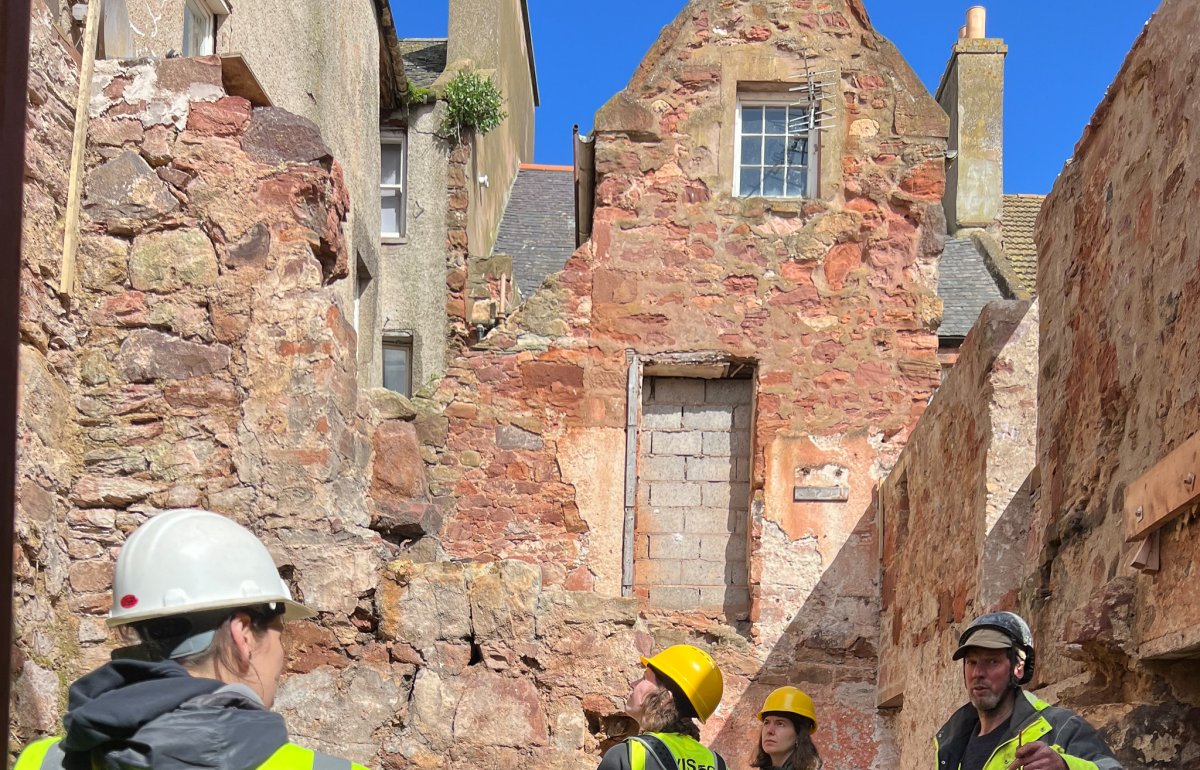A week in the life of a Scholar: Jen Langfield reports on her final weeks
Share on:
Where did you wake up today?
This morning I woke up in Melsetter House, on the Island of Hoy. The other SPAB Scholars and I are here to learn more about the house and its history, and importantly, to develop our understanding of the conservation challenges that properties such as this face.
After a long journey by car and ferry, it was dark by the time we arrived at Melsetter earlier this week. We were welcomed by our hosts, Richard and Innes, who showed us where we’d be staying and treated us to a delicious meal of homemade soup, bread and locally produced cheese.
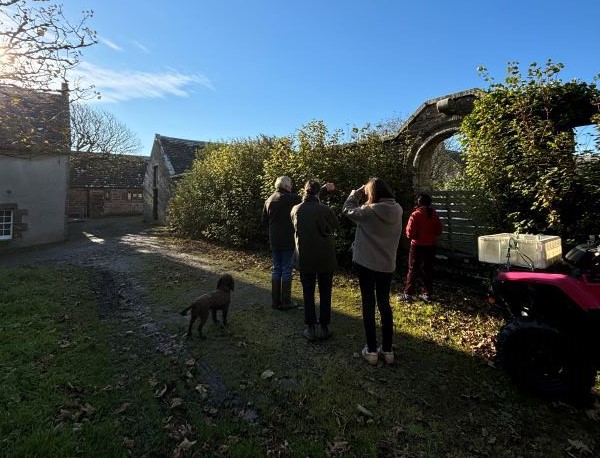
A tour of the house and grounds at Melsetter. Photo Jen Langfield
Generations of Scholars have visited Melsetter over the years. Many we’ve met have shared their fond memories of the place, and the first morning it’s easy to appreciate why. The property comprises older farmstead buildings centred around the 1898 Arts and Crafts house and chapel by W.R. Lethaby, co-founder of the SPAB. The Category A listed house sits within windswept gardens overlooking the sea, and the cluster of stone buildings stand like granite outcrops against the rolling farmland and autumnal woodlands.
What did you get up to today?
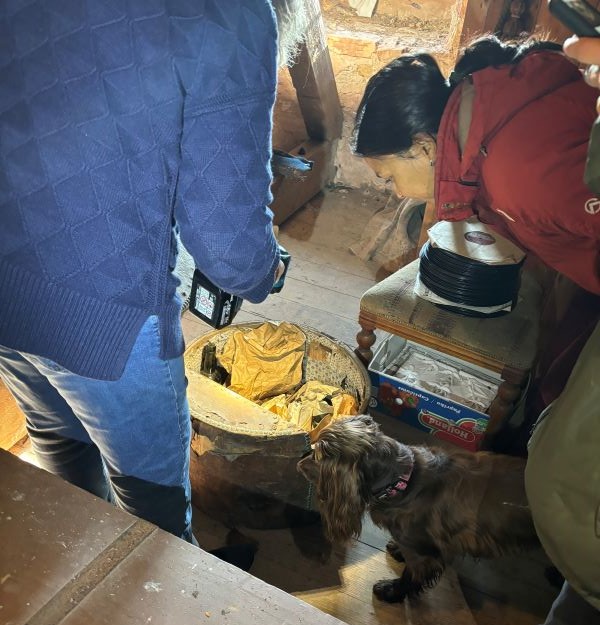
Exploring the attics at Melsetter with Innes and Quinn the dog. Photo Jen Langfield
Today we were given a guided tour by our hosts, which was a chance to chat about their experience of living here. Such conversations are a valuable insight on the responsibilities that come with looking after historic properties. We’ve also had time to explore the house and I’ve spent time drawing, measuring and recording architectural details - mostly inside so far, thanks to the changeable Orcadian weather!
By contrast, last month we were lucky enough to have an unseasonably sunny stay at Duart Castle, on the Isle of Mull. Perched on a cliff top, the formerly ruined 13th Century castle was restored to a dwelling in 1911, and shortly after was recorded to be suffering water ingress; extensive campaigns of remedial work followed but had proved unsuccessful. Our hosts there were stonemason Andy Bradley, architect Martin Hadlington and materials scientist Bill Revie. Over the last decade they have worked together to diagnose the issues and carry out appropriate repairs to the castle. Andy, Martin and Bill explained the monitoring and testing they’ve been able to conduct, and how this has led to a deep understanding of the building pathology.
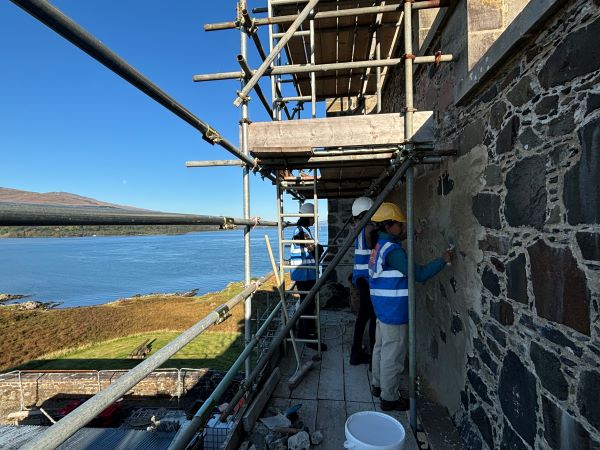
Tending pointing on the scaffold at Duart Castle. Photo Jen Langfield
On site, Andy demonstrated how the mortar mix had been developed, and we also helped to tend new pointing on the South elevation - definitely the most scenic scaffold I’ve been on to date! It is an exposed site that’s both a private home and open to the public, and spending time at Duart gave another insight into how complicated logistics of working with old buildings can be. It was great to spend time with the team reflecting on the past, present and future works, and I found it so inspiring to see what is being achieved due to their cross disciplinary approach. Staying at the cottage right next to the castle was another highlight, with evenings spent cooking, chatting, and swimming and kayaking in the sea.
What was your most memorable moment this week?
Exploring the local area is part of the fun, and this week we visited the excellent Scapa Flow museum, which focuses on the scope and impact of military history in the Orkney Islands. As Melsetter House was requisitioned during both the First and Second World War, the traces of this era which remain are an important part of the house’s significance. Whilst layers of historical fabric give rise to a particular set of challenges, it’s fascinating to grapple with ways of conserving these less tangible histories, and something I’d like to explore more in the future.
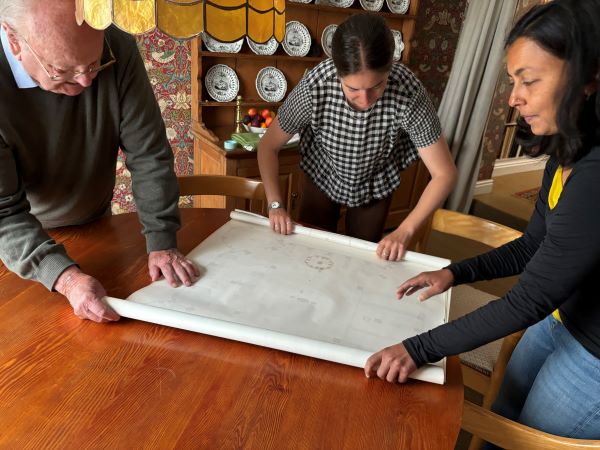
Looking through Neil’s Scholarship drawings. Phto Jen Langfield
As we near the end of our year we are all reflecting on what happens after the Scholarship. We recently interviewed architect Neil Birdsall to record his experiences of the Scholarship in 1969. Neil shared his memories from that year, and the ways that his career afterwards was shaped by what he had encountered. Whilst so much has changed since then, I was surprised how much common ground we shared in our Scholarship experiences. Understanding and methods will evolve, but the principles of approaching conservation projects remain the same.
What would you say to someone thinking of undertaking the scholarship?
If you’re interested in undertaking the Scholarship I’d encourage you to apply; It’s been an inspirational experience which has opened my eyes to the diversity of heritage work across the UK and Ireland. Whilst the Scholarship has given me so many unique experiences, I’ve also learnt that being a Scholar or Fellow doesn’t end after nine months. Undertaking either programme is a big commitment, but the support we have all received from the SPAB network has been incredible. I’ll always be grateful for the generosity of those who’ve shared their expertise, time and hospitality to support us this year.
Scholarship applications for 2025 are now closed. Read more about Scholarships
Sign up for our email newsletter
Get involved

